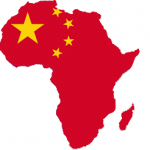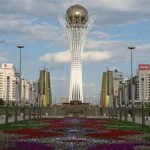Civil War and Crisis in Côte d’Ivoire – An Analysis of the Sources and Causes
{(C) Kapok Tree Diplomacy. Oct. 2010. 10 pages double-spaced. 19 references}
Table of Contents
I. Political Sources and Causes
a. Félix Houphouët-Boigny and the Legacy of Authoritarian Rule
b. Henri Bédié, General Robert Gueï and Laurent Gbagbo
c. Concept of Ivoirité
d. Dependency on the State
e. French Involvement
f. Multi-Party Democracy
g. Corruption
h. Political Source and Causes – Summary
II. Economic Sources and Causes
a. Dependence on Agriculture
b. Growth without Development
c. Lack of Investment Capital
d. Structural Adjustments
e. Land Tenure
f. Uneven Development
g. Economic Source and Causes – Summary
III. Social and Ethnic Sources and Causes
a. Foreign Workers
b. Ethnicity
c. Social and Ethnic Sources and Causes – Summary
IV. Regional Sources and Causes
a. Small Arms, Mercenaries and Destabilization
b. Failed Peace Accords
V. Conclusion
I. Political Sources and Causes
Félix Houphouët-Boigny and the Legacy of Authoritarian Rule. An appropriate place to begin an analysis of the crisis in Côte d’Ivoire is with the man who ruled the country from 1960 – 1993 and his benign authoritarianism. Houphouët-Boigny lured millions of migrant workers to southern cocoa fields in the 60’s and 70’s with a generous citizenship and land ownership package embodied in the premise of “the land belongs to those who work it” (Mimiko 194). Few people complained about the liberal immigration and land ownership policy when Gross Domestic Product (GDP) rose by 8 percent per year on average between 1960 and 1979 while other African nations had minimal or negative growth (Country Studies, “Introduction”).
Houphouët-Boigny held Côte d’Ivoire’s sixty ethnic groups together and kept them relatively happy for over thirty years by rewarding minority groups through a patronage system with prestigious government jobs and positions (Akokpari 97). However, as the abundance of land dwindled and cocoa prices plummeted in the 80’s and 90’s, state wages were cut in half and social dissent escalated dramatically (Guesnet, Muller, & Schure 12). Houphouët-Boigny could no longer patronize all his enemies, and indigenous Ivoirites began seeing their migrant neighbors in a new light. Scarcity began to aggravate ethnic divisions and undermine stability (Klaas 112). Furthermore, Houphouët-Boigny failed to name a successor prior to his death in 1993, creating an unstable situation where his successor, Henri Bédié, had to “legitimize his ascension to power” (Kohler 17).
Free Preview – Civil War and Crisis in Côte d’Ivoire – Table of Contents and Section One





Leave a Reply